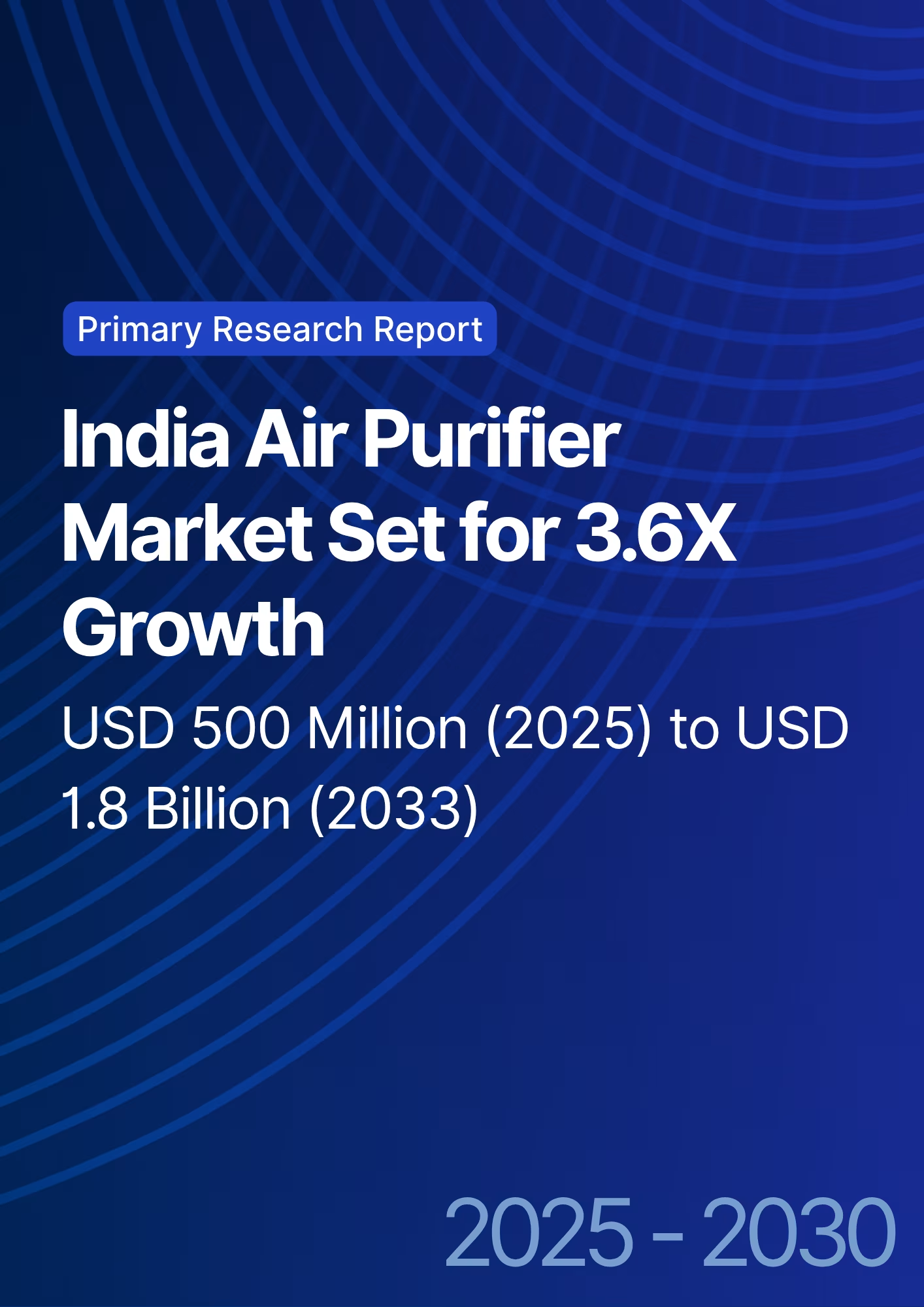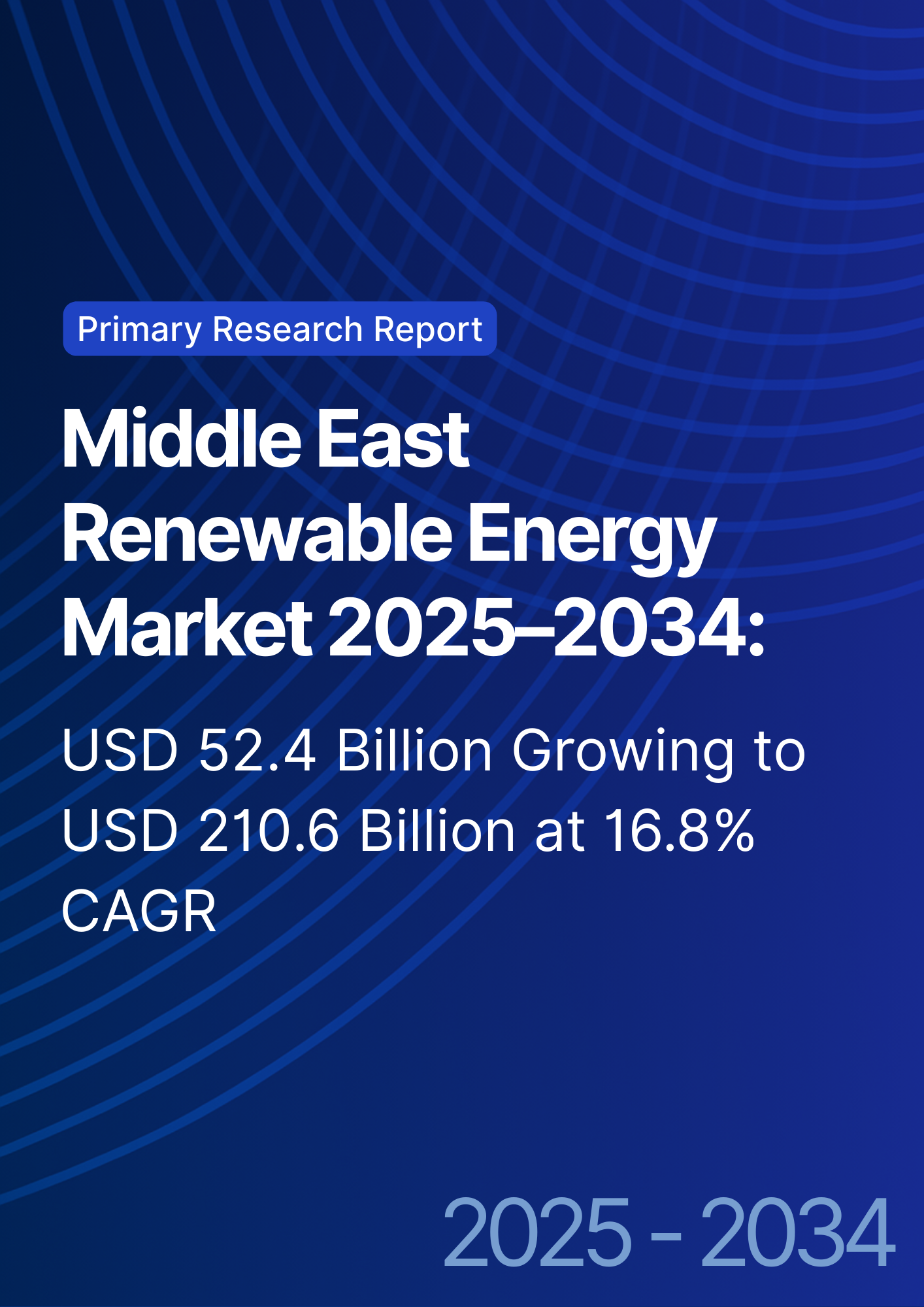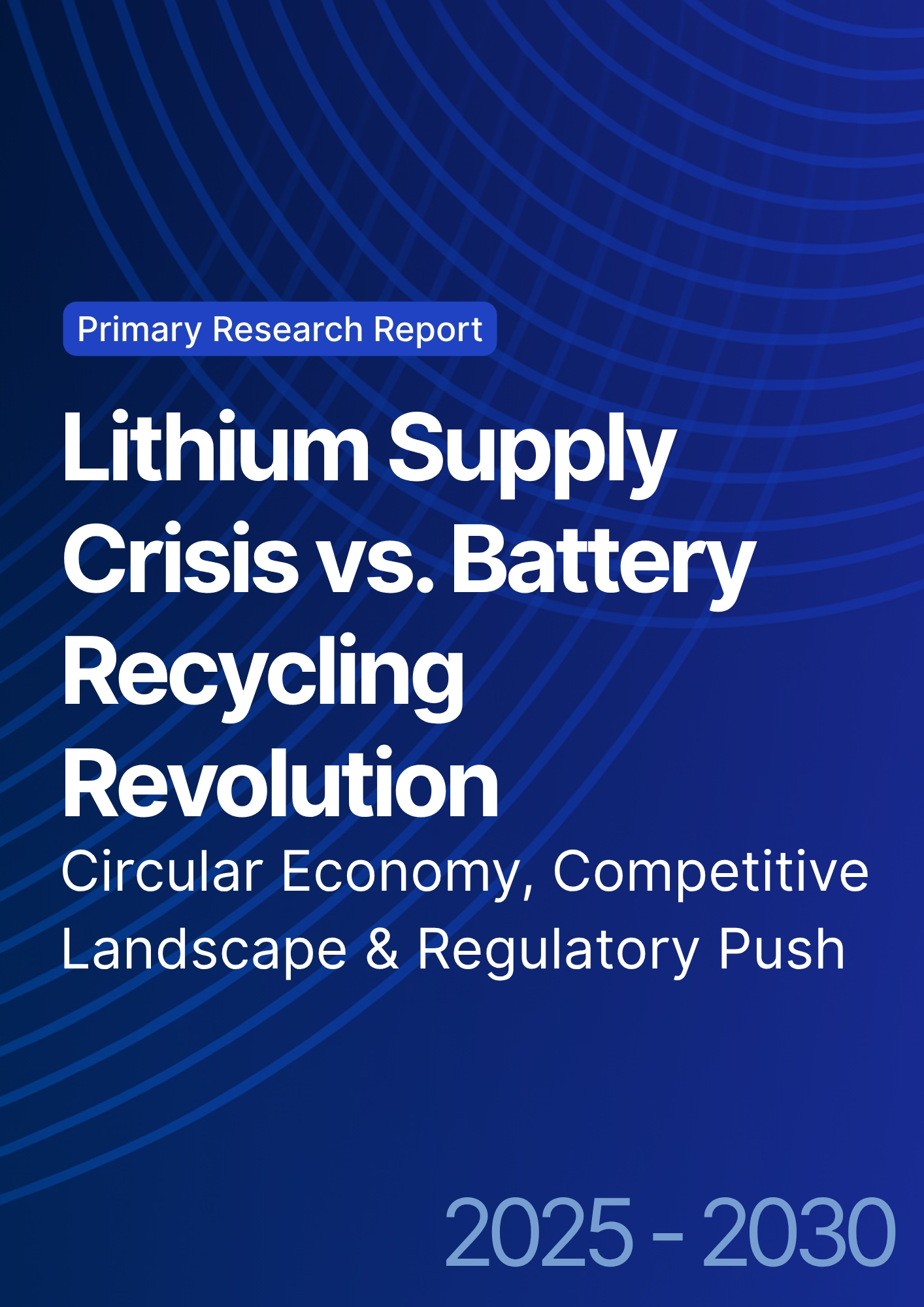

68 Circular Road, #02-01 049422, Singapore
Revenue Tower, Scbd, Jakarta 12190, Indonesia
4th Floor, Pinnacle Business Park, Andheri East, Mumbai, 400093
Cinnabar Hills, Embassy Golf Links Business Park, Bengaluru, Karnataka 560071
Connect With Us
India Air Purifier Market Set for 3.6X Growth: USD 500 Million (2025) to USD 1.8 Billion (2033)
India’s air purifier market is projected to grow from USD 500 million in 2025 to USD 1.8 billion by 2033, marking a 3.6× expansion at a CAGR of 17.4%. This growth is fueled by worsening urban air quality, increased consumer health awareness, and the rise of IoT-enabled and HEPA-based purification systems. The premium and smart home categories are expected to dominate demand, with penetration rising from 1.4% in 2025 to 5.3% by 2033. Government regulations, workplace mandates, and growing indoor pollution levels will collectively transform air purification from a luxury appliance to a household essential.

What's Covered?
Report Summary
Key Takeaways
- Market to expand 3.6×, from USD 500M (2025) to USD 1.8B (2033).
- CAGR of 17.4% over the forecast period.
- Urban households to account for 72% of total sales by 2033.
- Smart purifiers with IoT connectivity to capture 40% of new sales.
- Corporate and commercial sectors to drive USD 300M in annual demand by 2030.
- Delhi-NCR, Mumbai, and Bengaluru remain top three consumption clusters.
- Air quality index (AQI) >200 in metros accelerating product adoption.
- Replacement filter market to exceed USD 220M annually by 2033.
- Local manufacturing share to rise from 45% to 70%, reducing import dependence.
- Policy-driven adoption: new government indoor air quality norms expected by 2026.
Key Metrics
Market Size & Share
India’s air purifier market will grow from USD 500M in 2025 to USD 1.8B by 2033, expanding at a CAGR of 17.4%. The urban consumer segment will dominate, contributing 72% of overall sales, as rising AQI levels (above 200) in metros such as Delhi-NCR, Mumbai, and Bengaluru trigger widespread adoption. Smart purifiers, integrating IoT, HEPA filtration, and air quality tracking, are expected to account for 40% of new installations. Commercial and corporate adoption, especially across offices, malls, and hospitals, will add USD 300M in annual demand by 2030. Market share will increasingly consolidate around premium and mid-tier brands, supported by local manufacturing and cost reduction initiatives under Make in India.
Market Analysis
The market’s trajectory aligns with India’s broader smart home and health-tech revolution. Growing health consciousness—especially around asthma, respiratory illnesses, and post-pandemic indoor hygiene—is accelerating purchases. The integration of AI-driven sensors and IoT dashboards is enabling real-time AQI monitoring, fostering consumer trust and long-term use. Local manufacturers like Kent, Havells, and Blue Star are competing with global players such as Philips, Dyson, and Sharp, driving competitive pricing. The mid-range segment (USD 250–400) is growing fastest, appealing to upper-middle-class consumers. Moreover, corporate mandates for clean air in offices and schools, coupled with government-backed AQI campaigns, are ensuring sustained demand through 2033.
.png)
Trends & Insights
- Smart Connectivity: 40% of new models now integrate Wi-Fi and app-based monitoring.
- Subscription Ecosystem: Filter replacement plans creating recurring annual revenue streams.
- AI Integration: Predictive filters improving energy efficiency by 25%.
- Portable Models: Compact purifiers with plug-and-play adoption in Tier-II cities.
- Corporate Wellness Spending: Rising demand for B2B air quality solutions.
- Localized Filters: HEPA + activated carbon hybrids designed for Indian dust composition.
- IoT Ecosystem Expansion: Integration with Alexa, Google Home, and smart thermostats.
- Energy Efficiency: Next-gen purifiers to reduce power consumption by 18% by 2030.
- Green Certifications: Demand for low-carbon and recyclable designs.
- Indoor AQI Mandates: Government to roll out Indoor Air Quality Index (IAQI) standards by 2026.
These shifts collectively redefine the air purifier market from a niche appliance sector to a mass urban health necessity.
Segment Analysis
By 2033, the market will segment into residential (60%), commercial (25%), and institutional (15%) verticals. Residential demand, dominated by urban homeowners, will grow fastest as affordability improves and awareness spreads to Tier-II cities. The commercial segment, including malls, offices, and hospitality spaces, will expand due to ESG and wellness mandates. Institutional demand, particularly from schools, hospitals, and government facilities, will rise with new indoor air standards. Product-wise, HEPA + activated carbon systems (70%), UV-C purifiers (20%), and ionizer-based models (10%) will define market composition by 2033, supported by the rise of smart, connected, and portable systems.
.png)
.png)
Geography Analysis
Delhi-NCR remains the epicenter of demand, capturing 30% of total market volume, followed by Mumbai (18%), Bengaluru (12%), and Chennai (8%). Tier-II cities such as Pune, Ahmedabad, Lucknow, and Jaipur are expected to grow at CAGR 19–21%, fueled by worsening AQI and improving income levels. Southern India will witness the fastest adoption of smart purifiers, driven by strong tech infrastructure and higher disposable incomes. By 2033, the north and west regions will collectively hold 55% of national demand, supported by seasonal smog patterns and rising awareness of air quality health impacts.
Competitive Landscape
The market is highly competitive, with leading brands including Philips, Dyson, Xiaomi, Coway, Sharp, Blue Star, Kent, and Havells. Philips and Dyson dominate the premium segment through advanced HEPA filtration and smart controls, while Xiaomi leads the affordable smart purifier category. Indian manufacturers such as Blue Star, Livpure, and Kent are expanding local production under PLI (Production-Linked Incentive) schemes, increasing domestic capacity by 70% by 2030. New entrants like Airth and Crusaders are innovating with AI-based purification and sensor integration. The competition is intensifying around IoT ecosystems, energy efficiency, filter subscription models, and price-accessibility, positioning India’s air purifier industry for strong, sustained growth.
.png)
Report Details
Proceed To Buy
Want a More Customized Experience?
- Request a Customized Transcript: Submit your own questions or specify changes. We’ll conduct a new call with the industry expert, covering both the original and your additional questions. You’ll receive an updated report for a small fee over the standard price.
- Request a Direct Call with the Expert: If you prefer a live conversation, we can facilitate a call between you and the expert. After the call, you’ll get the full recording, a verbatim transcript, and continued platform access to query the content and more.


68 Circular Road, #02-01 049422, Singapore
Revenue Tower, Scbd, Jakarta 12190, Indonesia
4th Floor, Pinnacle Business Park, Andheri East, Mumbai, 400093
Cinnabar Hills, Embassy Golf Links Business Park, Bengaluru, Karnataka 560071
Request Custom Transcript
Related Transcripts
$ 1445


68 Circular Road, #02-01 049422, Singapore
Revenue Tower, Scbd, Jakarta 12190, Indonesia
4th Floor, Pinnacle Business Park, Andheri East, Mumbai, 400093
Cinnabar Hills, Embassy Golf Links Business Park, Bengaluru, Karnataka 560071













